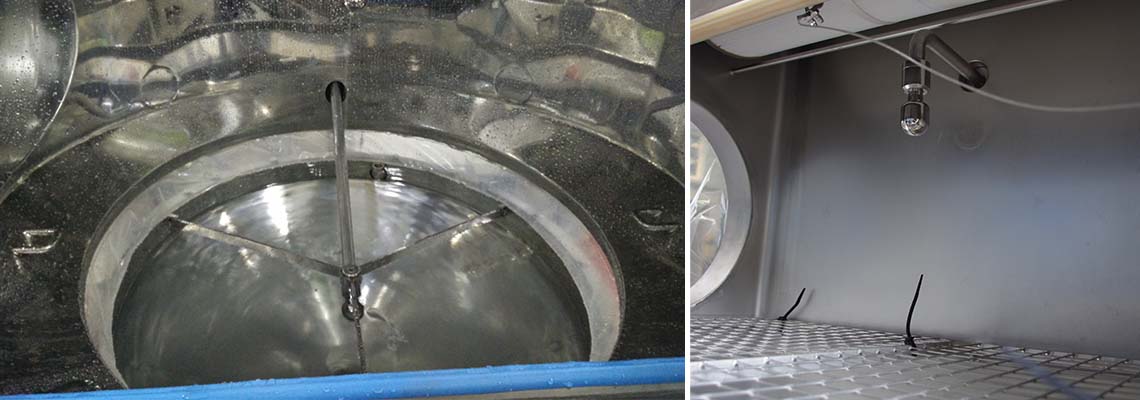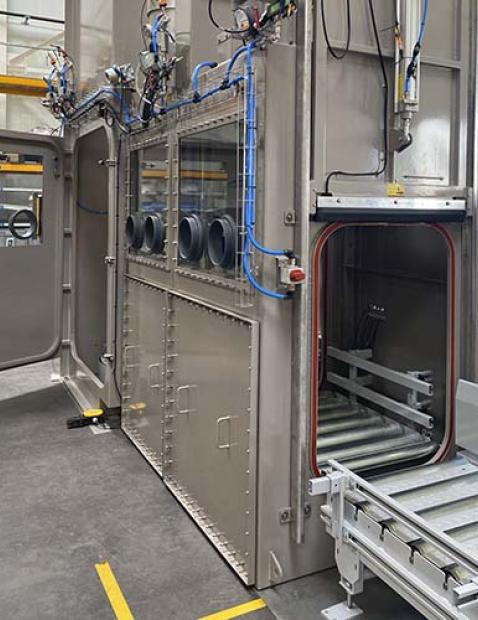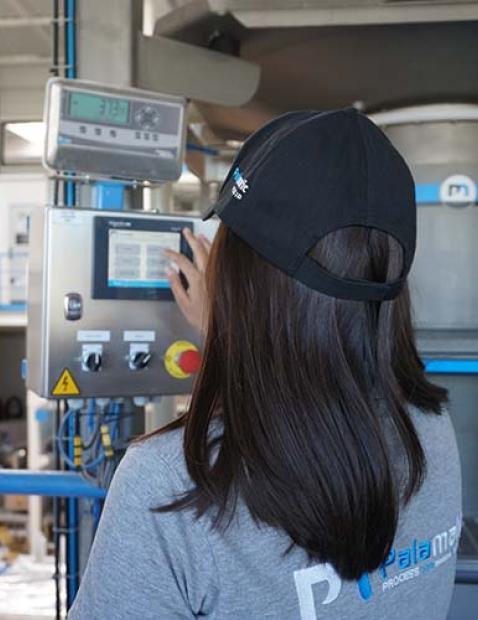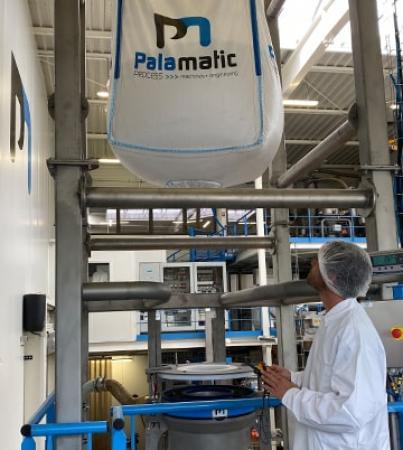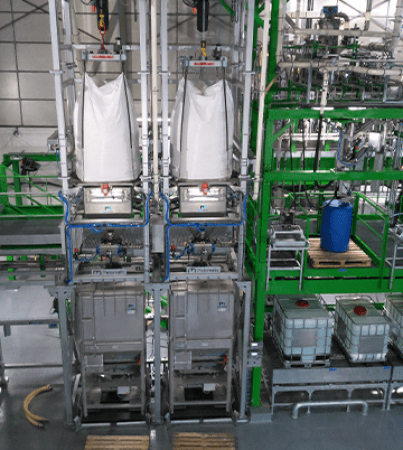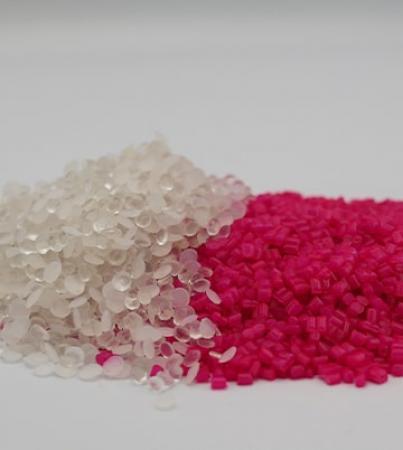What is Cleaning In Place? What are the benefits? How does a cleaning process work in a CIP system? Palamatic Process gives you its expertise on CIP systems for powder handling.
1. What is Cleaning In Place?
Clean-in-Place (CIP) is an automatic cleaning and disinfection method for powder production / processing plants. It allows the cleaning of surfaces of systems in contact with the products without having to dismantle or move the installation. It is usually integrated into industrial bulk handling equipment at the design stage. Cleaning in place is performed in ducts, pipes, hoppers, storage tanks or reservoirs in order to eliminate any trace of bacteria or powder deposits. It is a fixed or mobile installation.
2. Areas of application of CIP
Cleaning In Place is used in applications with high hygiene and disinfection requirements.
It is widely used in the food (beverages, dairy, baby food...), pharmaceutical, chemical, petroleum or cosmetic sectors. CIP will guarantee the respect of hygiene standards specific to each industry and limit the risks of contamination of finished products.
3. Benefits of CIP
A cleaning system in place has several advantages because it allows:
- A total respect of the hygiene standards in force in certain industries
- A high level of cleaning
- A reduction of microbial risks
- A reduction of the risks for the operators
- A complete management of the cleaning and decontamination functions
- Improved production capacity due to reduced set-up times and automatic post-production intervention
- Reduced water consumption
- Minimization of waste
- Reduced cleaning and maintenance costs...
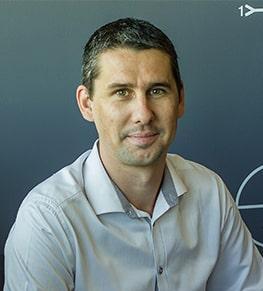
Do you want to install a CIP system
in your plant? I can help you.
Benjamin, powder expert
4. CIP Process
The Cleaning In Place system sends the appropriate cleaning products (detergent, disinfectant...) into the pipes and tanks.
Once connected to water, electricity and sewage, and after programming, the system automatically manages the different phases of dosing, washing and rinsing autonomously, without human intervention. It allows to control the concentration of the cleaning products, the time, the temperature, the quantity of water, thus optimizing the production costs and significantly improving the profitability of the manufacturing processes.
The device applies programs involving successively different cleaning products, disinfection and ending the cycle with a rinsing. It is used for closed systems consisting of pipelines connecting different equipment and tanks.
The steps of a typical CIP process are, in general, the following:
- A draining of the pipes with water and/or air. This draining will reduce the amount of cleaning products and the amount of effluents.
- An initial rinse with water; this rinse water can be recovered if necessary.
- Cleaning by circulation of a hot detergent in a closed loop with or without recovery in a tank. This detergent is generally reused after readjustment of the concentrations.
- An intermediate rinsing with or without recycling.
- A possible cleaning of a second detergent. This detergent is generally reused after readjustment of the concentrations.
- Disinfection to eliminate traces of detergent.
- The final rinse with water to eliminate the disinfectant. This final rinse water can be reused.
5. Components of a Cleaning In Place system
The main elements of a CIP system are:
- Tanks containing clean and/or reclaimed rinse water.
- Tanks containing the detergent solutions at their use concentration. Most often, there is a tank with an alkaline solution, usually soda, which dissolves proteins and saponifies grease, and a tank with an acid solution capable of dissolving lime and rust.
- The heating system of the tanks.
- Control system with temperature, level and conductivity sensors.
- Groups of pumps and valves to circulate the cleaning solutions in the equipment to be cleaned and to recover them, if necessary, in the appropriate tanks or send them to the drain.
- Systems for spraying cleaning solutions into the equipment: spray balls.
In-place cleaning systems can be installed on various Palamatic Process lines.
Contact us for your CIP project.














